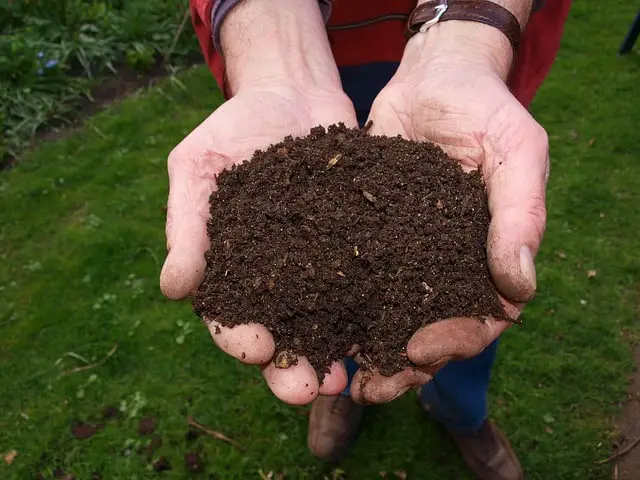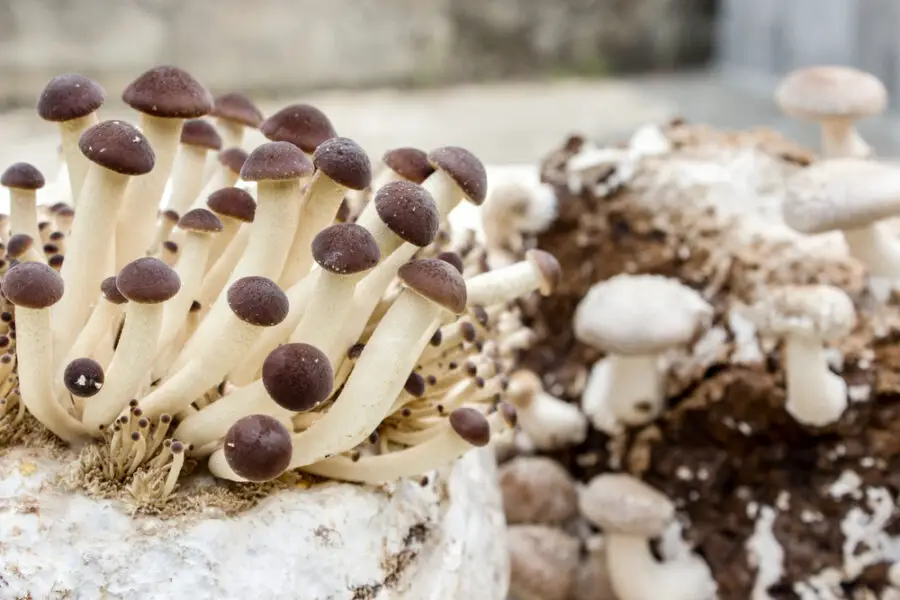Mycelia are the fine, hairlike tendrils of fungus such as mushrooms. They grow best when kept at an ideal temperature range. Although this varies for different species, the optimal temperature for mycelia is generally between 75-81oF, which is between 24-27oC.
The remainder of this article discusses what mycelia are, how they work, prime growth conditions and what they can be used for.
What are mycelia?
The Center for Regenerative Agricultural and Resilient Systems describes mycelia as the vegetative part of a fungus. Essentially, they form a network of fine white plant filaments called hyphae, which help the fungus get to and absorb more water and nutrients than it would be able to reach on its own.
The mycelium (plural mycelia) is also the part of the plant that mushrooms grow from. You might want to think of mushrooms as being the ‘fruit’ of mycelia. Not all mycelia produce mushrooms, but each and every mushroom comes from mycelia.
Depending on the plant, mycelia can increase the number of nutrients a fungus can absorb by a factor of between 10 and 1,000! This can be seen in mushrooms, brackets, truffles, cups and morels.
How do mycelia work?
The fungus absorbs water and nutrients from the environment through its mycelia, with its hyphae filaments forming a web-like network. They can be so small that you need a microscope to see them, but can also span thousands of acres!
Scientific American magazine announced that Earth’s largest known living organism was a fungus called Armillaria ostoyae. Discovered in 1998, it was found to cover nearly four square miles (or 10 square kilometers) of land, mostly through its subterranean mycelia.
Mycelia work in a two-step process:
STEP 1: The mycelial hyphae secrete enzymes onto the food source to break them down and make them easier to absorb.
STEP 2: The mycelia absorb the small particles of food which can then be metabolized by the fungus.
Mycelia and ecosystem health
Mycelia are not only important for the life cycle of fungi. They are also an integral part of large- scale aquatic and terrestrial ecosystems. Cornell University indicates that thanks to mycelia, fungi are responsible for the decomposition of plant remains in the soil, leaf litter and compost.
They are also a key food source for many soil-dwelling invertebrates.
What are the best conditions for growing mycelia?
To thrive, mycelia need a suitable habitat with optimal temperature, proper substrate, correct humidity and appropriate levels of sunlight.
A dark place is best for mycelia, with a substrate temperature of between 75 and 81o Fahrenheit, or 24-27o Celsius. The substrate, which can be soil, cereal, wood sawdust, straw or cardboard, needs to be kept moist and warm, with at least 90% humidity.
Mycelia is pretty good at creating and maintaining its own humidity, but you can give them a helping hand by misting them with a spray bottle. Just be sure to never spray the mycelia or fungus bodies directly.
Once the fungus is ready to grow, the temperature should be reduced to between 70-70oF (22-27oC). This suits the fruit and compensates for the heat given off by the mycelia during this growing phase.
Where can you find mycelia?
You’re most likely to find mycelia in well-fertilized fields, heaths and woodlands. They love dark, dank soil that is covered in decaying leaf litter.
There are more than 14,000 species of mushrooms and their mycelia all over the world. Without a doubt, countless others have not yet been discovered.
What are mycelia used for?
Scientists are only beginning to tap into the potential of mycelia beyond their role in sustaining natural ecosystems. Being natural, renewable and sustainable, they have eco-friendly credentials and can be reused and regrown time and time again.
Here are some ways mycelia are changing the world:
As building material
National Geographic has coined the term ‘mycotecture’ to describe mushroom-based building materials. Innovative companies use mushroom products to build furniture, building blocks, tiles and particleboard.
Mycelia can also be used to make building materials stronger, lighter and fire-resistant.
As packing material
Mycelia are an eco-friendly and biodegradable alternative to polystyrene, which is commonly used in packaging like Styrofoam. When placed in agricultural waste, they take just 3-5 days to grow into a strong and durable material.
Better yet, scientists can select for qualities like water absorbency and flame retardancy by the species they choose to cultivate.
In the fashion industry
You might not have heard of Mylo, or mushroom leather, but it’s a next-generation, organic fiber made from mycelia. As a synthetic ‘leather’, it may well be the next big thing in cruelty-free leather alternatives.
As a binder
Mycelia is strong and durable and when they are spread across roads, they can act as a binder. This is particularly important on heavy-duty logging roads where mycelia help to bind new soil in place before plants can grow and establish roots.
In mycofiltration
Mycofiltration is the name for the process where fungi remove chemicals and micro-organisms from the soil and water around them. They do this using their enzymes, which can break down substances such as medicines and perfumes that are normally resistant to bacteria.
Mycofiltration is already widely used to help clean up domestic wastewater and industrial effluents around the world.
Converting biomass to compost
If you have a backyard compost bin, see if you can spot a network of mycelia happily converting your kitchen scraps to rich organic compost. Great for your garden and a haven for worms, compost also reduces the amount of waste that ends up in landfill.
In mushroom growing kits
Last, but by no means least, mycelia are the key component for mushroom-growing kits. They are widely popular and you may already have a kit of your own.
Mushroom growing kits are made up of mycelia and a substrate for them to grow in such as sawdust or potting soil. An easy and fun way to grow mushrooms, the kits are a great way to learn about mycelia and the life cycle of fungi such as mushrooms.
Hi, I’m John Stephens, chief editor and writer for Totalgardener.com. I’ve been gardening and raising animals for over 15 years starting with a small backyard plot in Northern Virginia where I grew corn, potatoes, squash, and using a high mulch technique called the Ruth Stout Method. I also raised ducks and small mammals for meat and eggs in a movable pen similar to the ones used by Joel Salatin. I later moved to Colorado where I experimented with growing greens using aquaponics inside. I eventually added a microgreens setup and home sprouting operation. I’m excited to share everything I’ve learned plus more from the other local gardening and animal raising experts I know.



